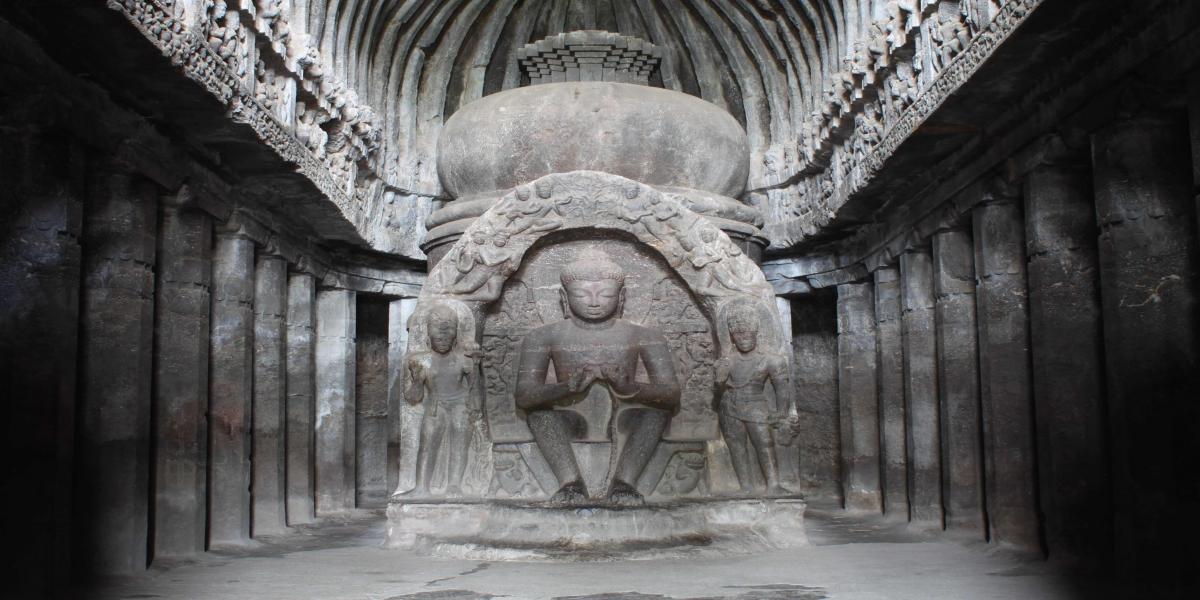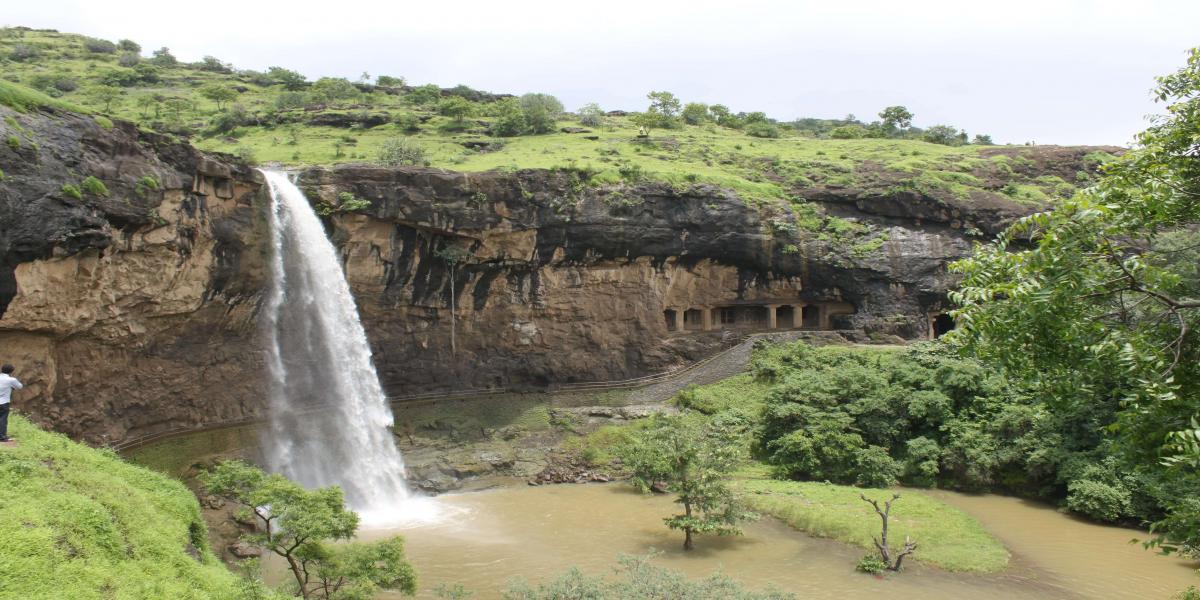Ellora Caves
Ellora or Elapura as known from the Rashtrakuta inscriptions is said to have been their capital for a brief period. The earliest reference to the caves dates back to 10th century A.D. by an Arab geographer, Al-Masudi. In A.D. 1352 Sultan Hasan Gangu, a Bahamani ruler visited the caves, for whom, the approach roads were repaired. The Marathi literary works such as Lilacharitra of Mahimbhat and Amrutanubhav of saint Jnaneshwar also mention about these caves. The caves are hewn out of the basaltic rock of the Deccan trap. The caves are datable from circa 6th century A.D. to 11th century A.D. In total, there are more than 100 caves in the Ellora hill range out of which 34 caves are mostly visited by the tourists. These caves are located on the western face of the ridge of the Ellora range and spread over for one and half kilometers from one end to the other in south north direction. Most of the caves face west, while the Jain group of caves faces to south. Out of the 34 caves, cave 1to 12 are Buddhist, caves13 to 29 are Brahminical and caves 30 to 34 are Jain. Buddhist group - The developments in Buddhist Caves are ascribed to A.D. 450 to 650. These two groups consist of a single Chaityagriha or the prayer hall and monasteries. The cave 5 is the largest and noteworthy among the early group of caves at Ellora. Among the second group (cave 6 to 12), the Teen Taal is the biggest and elaborate and cave 10 which is Chaityagriha also known as Vishwakarma Cave or Sutara chi zopadi (carpenters hut) are most important and noteworthy. It houses a huge seated Buddha image in dharmachakrapravartan mudra carved over facing of the stupa. Brahminical group: There are 17 excavations belonging to the Brahminical faith at Ellora, excavated out of the west face of the hill for nearly a km in length and datable from about A.D. 650 to 800. The main example of this group are cave 13, Ravan ki khai or the abode of Ravana, cave 15 Dashavatara cave or the cave of ten incarnations of Vishnu; cave 16, the far famed great Kailas; cave 21, Rameshwar; caves 29, Dumar lena. Out of these 17 only cave 15 bears inscription of 14 lines praising the great king Dantidurga (Saka Era 675-around 753 A.D.) and Lord Siva, Parvati Sarasvati and records genealogy of the Rashtrakuta family. The Cave 16 marks the departure from all earlier conventions in which a huge mass of rock was separated from the parent rock formation first and then it was sculpted and carved into a huge temple from top to bottom. Kailas was excavated under Krishna 1st (A.D. 756-775) the Rashtrakuta monarch. The Kailas has an entrance gateway, an intermediate Nandi shrine, the body of the temple, and the cloisters surrounding the courtyard. The main body of the temple is a huge parallelogram with the principle shrine excavated at the first floor level. The level corresponding to the lower story consists of a series of moldings executed one above the other. In general the Kailas temple follows the Dravidian style of architecture. The massive plinth is occupied by boldly carved elephants and lions. Episodes from the Mahabharata and Ramayana are also sculpted on the walls of the plinth. The principal shrine proper rises to a height of nearly 23 m over the plinth with four subsidiary shrines all fashioned out of the rock making the temple a kind of panchayatana on plan. The interior of the shrine consists of pillared mandapa, an antarala and a garbhagriha. Remnants of paintings are also seen on the ceiling of the portico. The original paintings have survived at very few places. The entire structure was given externally a lime plaster with wash and painted with ochre colored paintings during the period of Ahilyabai Hlokar (18th century A.D.). Another important excavation is the Dumar lena (cave 29), which consists of an isolated shrine located within a hall arranged on a cruciform plan. Jain Group: The Jain group of caves is from cave 30 to 34, which probably started around 800 A.D. and continued till 11th century A.D. Out of five excavations; the cave temple 30 is known as Chhota Kailas. The other two important ones are the Indra Sabha (cave 32) and the Jagannath Sabha (cave 33). An interesting factor seen between cave nos.32 and 33 is an interconnecting passage on the first floor provided also retained some of the finest mural paintings of the later period in Maharashtra. Cave 32 houses a life size monolith elephant in the court yard opposite to a 9.4 meters high Manas Stambha. Ellora spectacular architectural and sculptural exuberance and its religious harmony it is also listed as World Heritage Monument by the UNESCO in 1983.










